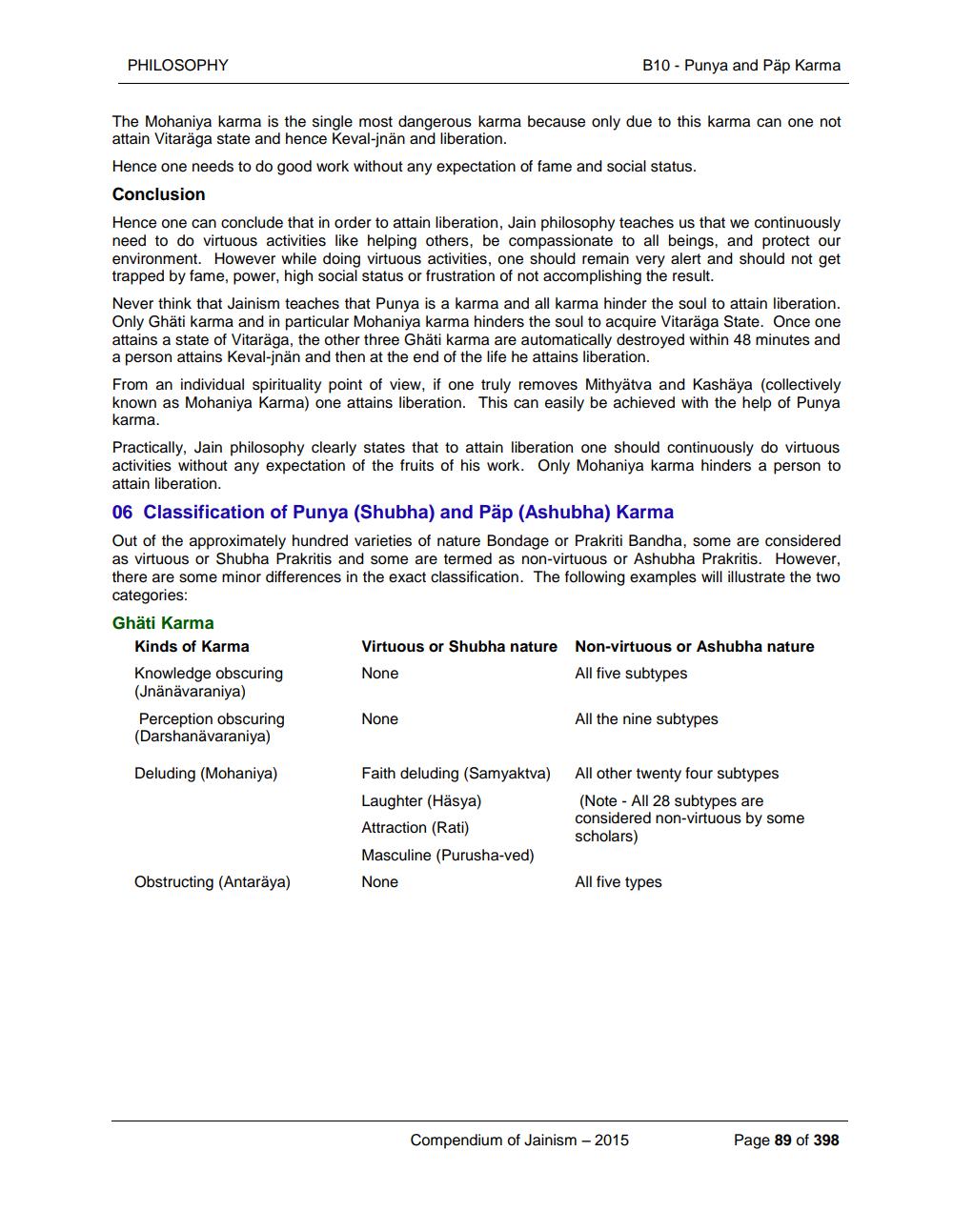________________
PHILOSOPHY
B10 - Punya and Pap Karma
The Mohaniya karma is the single most dangerous karma because only due to this karma can one not attain Vitaräga state and hence Keval-jnän and liberation. Hence one needs to do good work without any expectation of fame and social status. Conclusion Hence one can conclude that in order to attain liberation, Jain philosophy teaches us that we continuously need to do virtuous activities like helping others, be compassionate to all beings, and protect our environment. However while doing virtuous activities, one should remain very alert and should not get trapped by fame, power, high social status or frustration of not accomplishing the result. Never think that Jainism teaches that Punya is a karma and all karma hinder the soul to attain liberation. Only Ghäti karma and in particular Mohaniya karma hinders the soul to acquire Vitaräga State. Once one attains a state of Vitaraga, the other three Ghäti karma are automatically destroyed within 48 minutes and a person attains Keval-jnän and then at the end of the life he attains liberation. From an individual spirituality point of view, if one truly removes Mithyatva and Kashaya (collectively known as Mohaniya Karma) one attains liberation. This can easily be achieved with the help of Punya karma. Practically, Jain philosophy clearly states that to attain liberation one should continuously do virtuous activities without any expectation of the fruits of his work. Only Mohaniya karma hinders a person to attain liberation. 06 Classification of Punya (Shubha) and Päp (Ashubha) Karma Out of the approximately hundred varieties of nature Bondage or Prakriti Bandha, some are considered as virtuous or Shubha Prakritis and some are termed as non-virtuous or Ashubha Prakritis. However, there are some minor differences in the exact classification. The following examples will illustrate the two categories: Ghäti Karma Kinds of Karma
Virtuous or Shubha nature Non-virtuous or Ashubha nature Knowledge obscuring
None
All five subtypes (Jnänävaraniya) Perception obscuring None
All the nine subtypes (Darshanävaraniya)
Deluding (Mohaniya)
Faith deluding (Samyaktva) Laughter (Häsya) Attraction (Rati) Masculine (Purusha-ved) None
All other twenty four subtypes (Note - All 28 subtypes are considered non-virtuous by some scholars)
Obstructing (Antaräya)
All five types
Compendium of Jainism - 2015
Page 89 of 398




